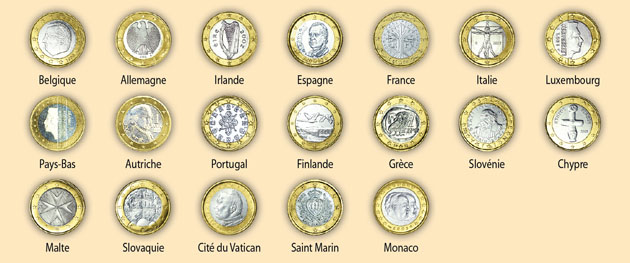For most of us the 24th and 31 December are dates that are synonymous with private rather than professional celebrations. For the financial sector in Monaco these dates are fundamental, marking the two agreements signed for Monaco’s entry into the Euro zone, all of ten years ago.
The entry took place in two stages, with the agreement of 31 December 1998 establishing the principle of the Euro’s introduction to the Principality, and the “monetary agreement” of 24 December 2001 specifying the practical terms of Monaco’s participation in the Euro zone. The Principality’s joining the Euro zone breaks down into the issuing of coins with Monaco’s arms, and into Monaco’s banking institutions’ participation in European payment systems.

The introduction of the Euro, a complete success
For Monaco’s coins this new era led to little change at the conventional level, but radically altered international numismatic interest in these limited-issue national coins.
In terms of numbers, since 2002 the Principality has been issuing “Monaco Euros”, whether for circulation or collectors, to match the long-standing quota established by accord with France, so with 1/500th of the number of French coins struck. Since France minted a high number of Euros in the early years, the Principality benefitted from a large quota, allowing the striking of coins for circulation, issued for public use in 2002. So the introduction of the Euro was a complete success. Thereafter, since their coin stocks were sufficient, France limited its issues, which led, from 2004 onwards, to a reduction in the quota of Monaco coins.
Great enthusiasm for Monaco coins
Given the small size of the quotas, the Principality took the decision to prioritise the minting of coins of a superior quality. This step was a response to the immense enthusiasm that had been observed for European coins since 2002, in particular those from the smaller states. This appeal was reinforced by the accession of H.S.H. Prince Albert II to the throne.
In 2007 the Principality once again issued coins for circulation, in particular the first €1 coin with the head of H.S.H. Prince Albert II. Since the number of coins in circulation remains low, in comparison to those issued by the other countries of the Euro zone, Monaco coins are much sought after and so circulate very little.
A common currency for unified payment
Over the last 10 years the monetary agreement has become the second foundation of the Principality’s legislation concerning finance and banking, in that it echoes, but also completes Monaco’s earlier engagements with France. The Monaco banking system is fully integrated with the Euro zone and credit institutions established in the Principality have access to the Euro zone’s payment systems. For its part, the Principality has undertaken to participate in the stability of the European monetary system. Monaco’s financial institutions are therefore subject to the regime of the European Central Bank, which specifies obligatory reserves and collects statistical information. The banks are also subject to the same rules that apply to Euro zone credit institutions for the regulation of their activity.
Over the last ten years the monetary agreement has allowed the Principality not only to retain its ancestral right to strike a currency with its own arms, but also to bring its financial law into line with international standards.





